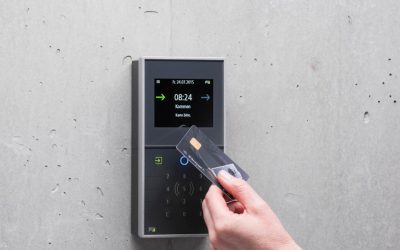CCTV & Access Control Project
In an era where security concerns are paramount, the integration of advanced surveillance technologies has become a necessity for both residential and commercial properties. The CCTV & access control project represents a significant step forward in enhancing security measures, providing peace of mind to property owners and businesses alike. With the rise in crime rates and the increasing sophistication of criminal activities, the need for robust security systems has never been more critical.
This project aims to address these challenges by implementing state-of-the-art CCTV systems alongside comprehensive access control solutions. The importance of this project cannot be overstated. It not only aims to deter potential threats but also to provide a reliable means of monitoring and managing access to sensitive areas.
By leveraging technology, property owners can ensure that their premises are safeguarded against unauthorized access and that any suspicious activities are recorded for future reference. This initiative is particularly relevant in urban environments, where the density of population often correlates with higher crime rates. As such, the CCTV and access control project is designed to create a safer environment for all stakeholders involved. Protect your smart home with confidence by choosing Alpha Security Corp for comprehensive and reliable security.
Key Takeaways
- The project aimed to enhance security through integrated CCTV and access control systems.
- Implementation involved overcoming technical and logistical challenges for seamless integration.
- The Sydney case study demonstrated significant improvements in monitoring and access management.
- Key benefits included increased security, real-time surveillance, and controlled access.
- Lessons highlighted the importance of planning, technology compatibility, and ongoing maintenance.
Overview of the Project Scope and Objectives
The scope of the CCTV and access control project encompasses a wide range of activities aimed at enhancing security infrastructure. The primary objective is to install high-definition CCTV cameras strategically positioned to cover critical areas of the property, ensuring comprehensive surveillance. Additionally, the project includes the implementation of access control systems that regulate who can enter specific zones, thereby minimizing the risk of unauthorized access.
This dual approach not only enhances security but also streamlines the management of personnel and visitors. Another key objective of the project is to integrate these systems into a cohesive platform that allows for real-time monitoring and management. This integration is crucial for ensuring that security personnel can respond swiftly to any incidents that may arise.
Furthermore, the project aims to provide training for staff on how to effectively use these systems, ensuring that they are well-equipped to handle any security challenges. By establishing clear objectives and a well-defined scope, the project sets the stage for a successful implementation that meets the needs of all stakeholders.
Implementation Process and Challenges Faced

The implementation process for the CCTV and access control project involves several critical phases, each requiring careful planning and execution. Initially, a thorough assessment of the property is conducted to identify vulnerable areas that require surveillance. This assessment informs the placement of cameras and access control points, ensuring maximum coverage and effectiveness.
Following this, the installation phase begins, where skilled technicians work diligently to set up the equipment while minimizing disruption to daily operations. However, like any large-scale project, challenges inevitably arise during implementation. One significant challenge faced was ensuring compatibility between different systems and technologies.
With various manufacturers involved, it was essential to ensure that all components could communicate effectively with one another. Additionally, logistical issues such as scheduling installations around business hours posed challenges in minimizing downtime. Despite these hurdles, the project team remained committed to finding solutions, demonstrating resilience and adaptability throughout the process.
Benefits and Outcomes of the Project
The successful completion of the CCTV and access control project yields numerous benefits for property owners and businesses alike. One of the most immediate advantages is the enhanced security provided by continuous surveillance and controlled access. This not only deters potential criminals but also instills a sense of safety among employees and residents.
The presence of visible security measures often leads to a reduction in crime rates, as would-be offenders are less likely to target properties equipped with advanced security systems. Moreover, the integration of these systems allows for improved operational efficiency. With real-time monitoring capabilities, security personnel can respond promptly to incidents, reducing response times significantly.
Additionally, recorded footage from CCTV cameras serves as valuable evidence in case of disputes or criminal activities, aiding law enforcement in their investigations. Overall, the project not only enhances security but also contributes to a more efficient management of resources and personnel.
Integration of CCTV and Access Control Systems
The integration of CCTV and access control systems is a pivotal aspect of this project, as it creates a unified security framework that enhances overall effectiveness. By linking these two systems, property owners can achieve a higher level of situational awareness. For instance, when an access control point is breached, the corresponding CCTV camera can automatically focus on that area, providing real-time visual confirmation of the event.
This synergy between systems allows for a more proactive approach to security management. Furthermore, integrated systems enable centralized control through user-friendly interfaces that allow security personnel to monitor multiple feeds simultaneously. This centralization simplifies operations and enhances decision-making processes during emergencies.
Additionally, data collected from both systems can be analyzed to identify patterns or trends in security incidents, allowing for informed adjustments to security protocols as needed. The seamless integration of CCTV and access control not only improves security but also enhances operational efficiency across the board.
Case Study: CCTV Project in Sydney

A notable example of a successful CCTV project can be found in Sydney, where a large commercial complex sought to enhance its security measures in response to rising concerns about theft and vandalism. The project involved installing high-definition cameras throughout the premises, including parking lots, entrances, and common areas. In conjunction with this, an advanced access control system was implemented to regulate entry points and monitor visitor access.
The results were remarkable; within months of installation, there was a significant decrease in reported incidents of theft and vandalism within the complex. The presence of visible surveillance acted as a deterrent for potential offenders while providing peace of mind for tenants and visitors alike. Additionally, the integration of these systems allowed security personnel to respond quickly to incidents as they occurred, further enhancing safety within the complex.
This case study exemplifies how effective implementation of CCTV and access control can lead to tangible improvements in security outcomes.
Lessons Learned and Recommendations for Future Projects
Reflecting on the implementation of the CCTV and access control project reveals several valuable lessons that can inform future endeavors. One key takeaway is the importance of thorough planning and assessment prior to installation. Understanding the unique needs and vulnerabilities of each property is crucial for determining optimal camera placement and access control points.
Engaging stakeholders early in the process ensures that their concerns are addressed and that the final solution meets their expectations. Another lesson learned is the necessity of ongoing training for staff who will be operating these systems. Providing comprehensive training ensures that personnel are familiar with all functionalities and can respond effectively during emergencies.
Additionally, regular maintenance checks should be scheduled to ensure that all equipment remains operational and up-to-date with technological advancements. By incorporating these lessons into future projects, organizations can enhance their security measures while minimizing potential challenges.
The Impact of CCTV and Access Control on Security Systems
In conclusion, the implementation of CCTV and access control systems represents a significant advancement in modern security practices. By providing comprehensive surveillance and controlled access, these technologies work together to create safer environments for both residential and commercial properties. The benefits derived from such projects extend beyond mere deterrence; they foster a sense of safety among occupants while enhancing operational efficiency.
As security threats continue to evolve, it is imperative that property owners remain proactive in their approach to safeguarding their assets. The lessons learned from successful projects serve as valuable insights for future initiatives aimed at enhancing security measures. Ultimately, investing in advanced surveillance technologies like CCTV and access control not only protects physical assets but also contributes to a culture of safety and vigilance within communities.
In addition to the insights provided in the Case Study: CCTV & Access Control Project, readers may find the article on Back to Base Security Systems: The Ultimate Protection for Your Property particularly relevant. This article delves into the importance of integrating advanced security systems to enhance property safety, complementing the strategies discussed in the case study.










